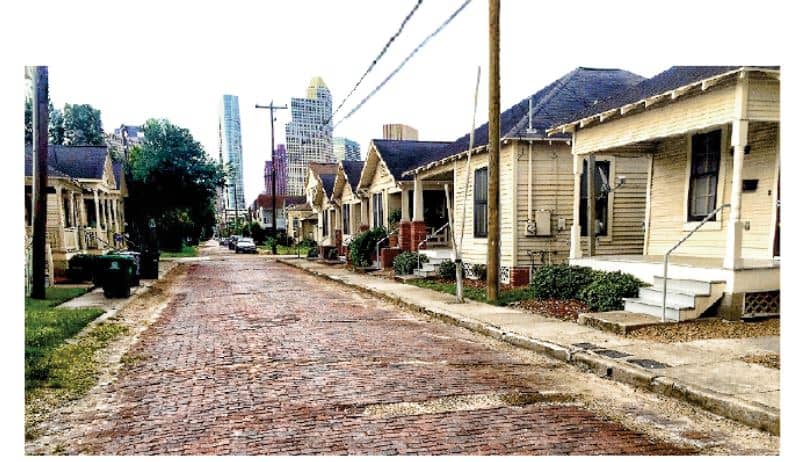Freedmen’s Town, often referred to as the “Mother Ward,” is one of Houston’s most significant African American communities. It holds a profound historical and cultural legacy, as it was founded by formerly enslaved people after the Civil War. Today, it stands as a symbol of resilience, self-determination, and the cultural identity of Houston’s African American population.

The Origins of Freedmen’s Town
Freedmen’s Town was established in the 1860s by freed African Americans seeking refuge and opportunity in the aftermath of the Civil War. Located in what is now Houston’s Fourth Ward, these newly freed men and women built homes, churches, and businesses from the ground up, creating a thriving and self-sustaining community.

Despite limited resources, they used bricks they made by hand to pave the streets – many of which remain intact today. This community became a hub for African American life in Houston, embodying the spirit of independence and solidarity.
Cultural and Religious Foundations
Religion played a crucial role in shaping Freedmen’s Town. Churches like Bethel Missionary Baptist Church and Antioch Missionary Baptist Church became more than places of worship – they served as community centers, offering education, support, and activism.


These churches were also pivotal in the fight for civil rights, fostering a sense of unity within the community. The residents of Freedmen’s Town passed down cultural traditions, ensuring future generations would remain connected to their heritage.
Freedmen’s Town in the Early 20th Century
By the early 1900s, Freedmen’s Town had become a vibrant cultural center. It housed schools, medical clinics, and businesses owned and operated by African Americans, providing essential services to the community. Institutions like the Jack Yates High School educated generations of African American students, empowering them to pursue higher education and leadership roles.

However, economic challenges and segregation policies made it difficult for Freedmen’s Town to expand. Despite these obstacles, the community maintained its sense of identity and pride.
Struggles and Urban Development
In the mid-20th century, urban renewal projects, including the construction of highways, encroached on Freedmen’s Town. Many residents were displaced, and some historic structures were demolished to make way for new developments. The community fought back, launching preservation efforts to protect their cultural landmarks and historical sites.

Today, organizations continue to work toward maintaining the integrity of Freedmen’s Town, recognizing its importance to Houston’s history. Preservation efforts aim to restore historic homes and buildings, such as the original brick streets, which remain a symbol of the community’s enduring legacy.
Freedmen’s Town Today
Though much of Freedmen’s Town has been altered by urban development, its spirit endures. The neighborhood is listed on the National Register of Historic Places, and efforts to preserve its remaining landmarks are ongoing. Visitors can explore the area to learn about the early settlers and their contributions to Houston’s growth.
Community leaders continue to advocate for the preservation of the neighborhood, ensuring that future generations understand its historical significance. Cultural festivals, walking tours, and exhibitions highlight the importance of Freedmen’s Town in shaping Houston’s identity.